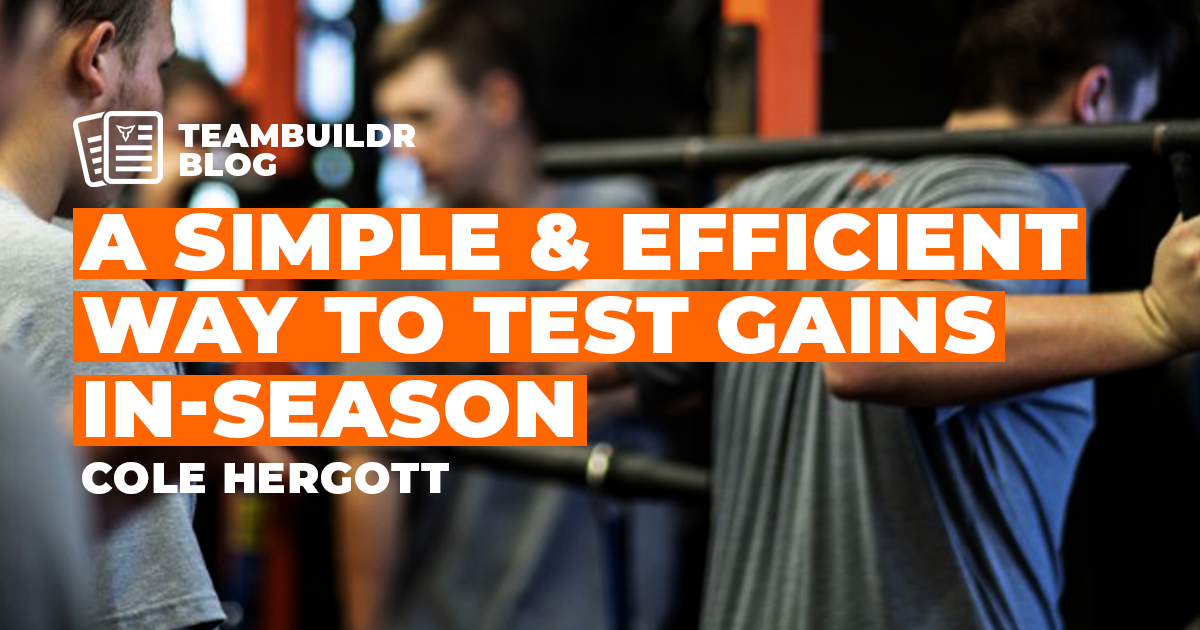Test Your Limits!
One concept lies at the heart of all athletics: challenge. Whether it’s an opponent, a record, or an incredible feat, all athletics comes down to a moment where you face a challenge and see if you’ve got the guts to overcome it.
As performance coaches, our job is to prepare our athletes to meet these challenges. Much of that is physical, but were cheating our athletes if we never give them the tools to build mental toughness. Not every workout needs to be a rocky montage, but at some point athletes need an opportunity to compete, push themselves, and walk out of the weight room know they did something crazy! Use these simple weight training activities to keep your athletes engaged and motivated.
Keep Em’ Safe!
Lately there has been some push back in the industry on the “mental toughness” aspect of training. College strength coaches are getting sued for clusters of rhabdomyolysis. Instagram is flooded with atrocious lifting technique in the name of maxing. In the worst cases of negligence, athletes have died. The pendulum swing makes sense.
But we can’t ignore the fact that part of being an athlete is pushing yourself. Athletes have to push through pain. They have to learn to find one more rep, hold on one more second, or push one more inch. It’s at the heart of what we do. So we do a disservice if we avoid anything that challenges our athletes in the weight room.
As coaches, we should be the ones to do it SAFELY. Here are some concepts when designing weight room challenges that can protect your athletes:
- Avoid muscular endurance challenges weeks 1-3. This is when the body is most susceptible to rabdo, and even beyond this period remember that any athletes who missed one of the first 3 weeks should be held out of challenges an additional week or two. Don’t forget that this applies to upper body movements just as much as lower body movements! Bicep and tricep rabdo are extremely common!
- Avoid weight room exercises that become dangerous with technique breakdown. Ever seen a rep on back squat or deadlift that makes you cringe? Expect a ton of them if you start having rep out contests with these exercises. Every exercise has a risk/reward ratio. Try and choose exercises with the lowest possible risk.
- Try to imagine the worst case scenario. Plate holds? What if an athlete drops a 45 on his toe? Med ball throws? What if an athlete isn’t looking and gets hit in the head? If there is a creative way to do something dumb and get hurt, kids will find it. Too much caution can never hurt.
That all being said, here are few of my personal favorite weight room workouts that have become staples in our program:
One Inch Pushup
Nothing gets a group focused for a training session better than a mental toughness challenge. The one inch pushup is one of our favorite weight room challenges because it combines core strength, shoulder stability, and increases upper body blood flow all at the same time.
Every athlete begins by setting up in our “perfect pushup position”: elbows tight, feet together, core and glutes engaged. Then on the “up one inch” command, athletes push their chest 1 inch off the floor and hold. A few seconds later we move up one more inch. And then another. Repeat until your reach lockout, then perform the same method back down. Use your best judgement as technique begins to fail. The difficulty of the rep is all controlled by how fast you move them through their positions.
Make sure to coach great trunk position during the pushup, just like you would any plank variation. Sometimes I will add in some scap pushups at lockout as well. For female athletes we begin at the top and only perform the eccentric portion.
Med Ball Gauntlet
Intent is king when it comes to developing power, so any time I can get athletes competing during RFD exercises I feel like we’re getting better work in. One way we do this is to have med ball gauntlets.
Put an assortment of med balls on the goal line and group up your athletes accordingly. Pick your favorite med ball throw variation, then have athletes travel down the field and back using only that variation. Once the athlete gets the med ball past the goal line, the next athlete begins their reps. Play around with variations, reps, etc. and you can have a brutal finisher that develops power and breeds competition.
Towel Isometric Hold
Grip challenges are always a solid option when throwing some competition work into your training. When you really want to ramp up the intensity, go grab a bunch of towels and hang two from each of your pullup bars. Group up your athletes into small groups (4-5) and have a last man standing tournament. If you outlast your group, you advance.
Ropes, fat grips, and other implements always make this more competitive as well. As with the muscular endurance challenges, its wise to save this for a point in your training where your athletes are well acclimated.
100 Rep Curls
This is a Flex Friday finisher we use later in our programming. It’s intense, competitive and will have your athletes feeling huge! Careful though, I wouldn’t recommend this weight training activity until well after your acclimation phase.
Groups of two or three athletes grab a barbell with no weight. Smaller athletes can use a 25lb bar or even an EZ curl bar. In general the athletes should be able to do at least 25 reps on the first set or the bar is too heavy. The bar is not allowed to touch the ground until someone hits a hundred curls. Athlete 1 starts doing curls, the bar must hit his thighs and chest on each rep. As soon as he fails to complete a perfect rep, he passes it to the next athlete who then does the same. Repeat until someone hit 100. If multiple athletes hit 100 on the same round, then whoever gets the most above 100 wins.
Subscribe to our blog
Subscribe to receive the latest blog posts to your inbox every week.
Related posts

Will Artificial Intelligence Take Over Strength Coach Jobs?

A Simple & Efficient Way to Test Gains In-Season
